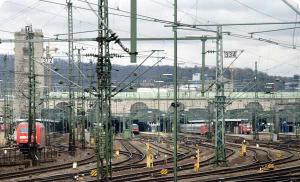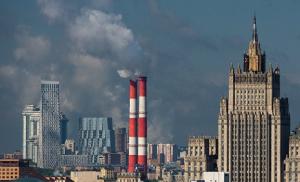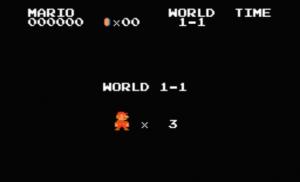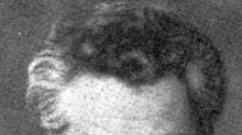The Lost World - Mount Roraima. Roraima: Table Mountain Tepui
Amazing beauty unusual mountain Roraima is located at the junction of three countries, Brazil, Venezuela (part of National park Kanaima) and Guyana.
This is the so-called tepui, or table mountain. Tepui are leftovers huge plateau, which in prehistoric times stretched from the Atlantic Ocean to the borders of the Amazon, Orinoco and Rio Negro river basins. The plateau itself, in turn, was formed on the site of a huge lake that existed about two hundred million years ago, back in the days when South America was a single continent. Or maybe, somewhere at this time, Atlantis also existed.
The very word "Telui" in the language of the Indian tribes of Pemon means "House of the Gods". Indeed, Roraima, like her sisters, floats among the clouds, and the gods feast on its top.
In fact, most of the tepuis stand isolated from each other and rise above the surrounding jungle sheer cliffs hundreds or even thousands of meters high, thus, due to their inaccessibility, being carriers of unique endemic animals and plants.
One of the first explorers to visit the Telui area was the German explorer Robert Schomburgk in 1835. He was fascinated by the mesas, but all his attempts to climb one of them failed. Only half a century later, in 1884, the Englishman Edward Thurn was able to climb to the top of Mount Roraima. Still, it was Robert Schomburgk's account of his journey to the land of Telui that inspired famous writer Arthur Conan Doyle to write his memorable novel The Lost World.
Not the tallest among her sisters. Its height is 2,810 m, making it the third highest among the telui. But Roraima is by far the most beautiful of them all. The fact is that the mountain is almost always surrounded by clouds, and in fact constantly floats in the heavenly ocean.
The plateau at the top of the mountain has a surface of about 34 square kilometers, which is home to many amazing animals. These are huge rats and miniature absolutely black frogs, a little more than a centimeter in size, and outlandish flowers that feed on insects from the vegetation. In general, about 80% of all animals and plants of the Roraima board are endemic, that is, they are found only here and nowhere else on Earth.
The table mountains of Canaima Park are considered one of the oldest geological formations on Earth, dating back to the region of two billion years, from the time of the Precambrian era.
From below, the feeling is created that the plateau from above is absolutely even. In fact, the summit is full of chaotic rock deposits and piles, steep hills and canyons. The mountains are composed of dense sandstone, which erodes and disintegrates unevenly, forming bizarre rocks that look like fabulous castles, then bizarre plants and mushrooms or chess pieces.
Roraima has one more interesting feature... The fact is that the mountain attracts thunderstorms. Almost every day, lightning strikes the top of the mountain, and in fact there is not a single tree on it that would not have suffered from a lightning strike. This feature of Roraima boldly allows her to be recorded into another phenomenon of thunderstorms and lightning.
An interesting fact, the valley at the foot of the mountain in 1993 served as the filming location for Steven Spielberg's famous fantastic blockbuster Jurassic Park.
Climbing Roraima usually carried out from the side of Venezuela, which owns three-quarters of the mountain, since this side is the gentlest slope. From the side of Guyana and Brazil, huge sheer cliffs which have areas with a strong negative slope, and although there have been a few ascents from these sides, these are very difficult climbing routes.
At the top of the plateau, several rivers originate, which fall down from a multi-meter (several hundred meters) height in the form of some of the highest and most beautiful waterfalls in the world. By the way, Angel Falls (the world's highest waterfall) is located in similar mesas, 130 kilometers from Roraima.
According to the beliefs of the Indians of the Pemon Roraima tribe, this is a stump giant tree from which all fruits and vegetables in the world originated. A tree cut down by one of the gods fell to the ground, causing a terrible flood. The very same word "rorama" means "big blue-green". Simple and straightforward.
Almost daily, the mountain is irrigated with rains, which wash away all plant nutrients from its surface, forming a unique sandy-rocky surface. Roraima is also home to stunning waterfalls (Angel Falls, considered the tallest, is also located on a similar mountain). On the surface of the mountain there are several islands for the vital activity of flora, due to which a unique species of carnivorous plants lives there.
By the way, interesting fact- it was after the expedition to Mount Roraima that the famous writer Arthur Conan Doyle decided to write his novel entitled The Lost World. So strong surrounding nature shocked this writer.
In 2008, the Discovery Channel, together with Animal Planet, released the educational adventure film Animal Planet: The Real Lost Word, dedicated to the world of Mount Roraima, whose landscapes and nature itself seem to have left the pages of science fiction novels.
Mount Roraima, also called the "heavenly island", is located at the junction of Venezuela, Brazil and Guyana. The top of the mountain with an area of 31 square kilometers is striking in its size. Roraima is one of the oldest geological formations on Earth, as it consists mainly of quartz sandstone, which is about 1 billion years old!
The Indians believe that this mountain is the fossilized remnant of the trunk of a huge tree that gave birth to all the fruits and vegetables of our planet. According to legends, the tree fell from the ax of Macunheim, the negative hero of Indian legends.
This mountain is also called "the mother of all rivers", because the Orinoco, Essequibo and the Amazon originate on its summit. Rivers descend from the "heavenly island" down the steep slopes in dozens of beautiful waterfalls.

It is believed that the gods lived on the flat top, therefore the mesas are also called the word "tepui", meaning "house of the gods." The Indians believed that this is where the souls of the dead fly away. Therefore, before the arrival of Europeans to Roraima, no one rose, fearing to anger the sleeping ancestors and powerful deities.
Even today, there are indigenous Indians who believe in the gods of the sacred mountain, rewarding people who still worship them with illumination. By the way, it was Roraima who inspired Arthur Conan Doyle to write the legendary novel The Lost World.

A flat mountain sometimes resembles a ship, cutting through the heavens on an eternal journey to the valley of dreams, dreams and desires. It is worth climbing to the top and a storm of emotions will overwhelm you. What you saw is impossible to forget and the echoes of blissful euphoria will excite your blood even after years. Perhaps this is a part of the gift of the gods, sung in ancient legends?

Video - Roraima. Venezuela
You may be interested in: - the place where the ancient Greek gods live.
On the territory of the Guiana Plateau there are not only giant plateaus - tepuis, there are also other geological phenomena, such as faults, deep caves, sinkholes, sinkholes and waterfalls. Here is also the highest in this area, the table mountain Roraima. It is located near where the borders converge. three states: Guyana, Venezuela and Brazil. Its height reaches 2800 meters. It was this plateau that became the habitat of dinosaurs in the famous novel by Conan Doyle "The Lost World". The first time they managed to conquer the mountain in 1884. It is clear that dinosaurs were not found there, but they found several species of animals and plants unknown to science, which live only here and are not found anywhere else. Climbing the mountain is a lifetime experience. Cloudy forests of dwarf trees covered with moss grow here. Along the trails, there are many ferns and unusual plants with three meter high gunner leaves. On the plateau itself, there are many rocks of the most bizarre shape, resembling either mushrooms, or chess pieces, or fabulous castles. About one fifth of the total area of the plateau is covered with water, so that in some places natural pools have formed. However, the water filling them is too cool. There are also peat bogs. Growing everywhere in a large number orchids and carnivorous plants. This is a type of flowering plant that feeds not only on insects that fall into their traps, but can even entangle and strangle small animals. Biologists explain the existence of predatory plants on some of the tepuis by the lack of nutrients in the soil, especially nitrogen and phosphorus, which are washed out heavy rains... Therefore, some representatives of the local flora had to find other sources of food for themselves. Most of the undersized trees resemble bonsai, which makes the plateau look like a Japanese garden. The fauna is poor here. There are mainly noses - the closest relatives of raccoons, possums, toads and lizards. It was possible to climb to the very top of Roraima only a little more than 20 years ago. The expedition, led by one of the mountaineering aces Don Willanson, the conqueror of Everest, took almost a month to overcome the vertical 400 meter wall. For all ecotourism lovers, visiting Roraima is a real adventure. There are several excursions per day for tourists. The tour usually lasts several days and only with an experienced guide. Hiking up the mountain on your own is not permitted. People often disappear in these places. During the hike, tourists carry their own personal equipment. The tents and provisions are carried by Indian porters. The end point of the route is a stone pyramid, the so-called triple point, which marks the junction of the borders of three states. Further, Lake Gladys is visible. It got its name from the lake from the novel by Conan Doyle. However, approaching it is prohibited. At a distance of a few more kilometers there is another remarkable place called "The bow of the ship". It is the narrow and sharp tip of the plateau towards the north. Clouds constantly "cling" to Roraima, fog is a common phenomenon here. In its twilight, the shapes of the cliffs take on unearthly views. Then it seems that even the air of this unique corner The earth is saturated with mysticism. In general, Roraima is a collection of the most beautiful landscapes, those happy eyewitnesses who have been here will sooner or later want to come back here again.
Mount Roraima, Venezuela is part of the Guiana Highlands, which is also called the "country of tepuis" (tepui - "home of the gods"). This rock is the highest in this area - its height is 2723 m.
What is Mount Roraima in Venezuela?
The Mesa Mountains are the legacy of a huge plateau that once covered an area from the Atlantic to deep rivers (Amazon, Orinoco). These tepuis are composed of a single piece of Precambrian quartzite or sandstone with gullies, caves and sinkholes.
The flora and fauna of Mount Roraima is unique because it is absolutely at the foot of the mountain. Many species of orchids and predatory plants are widespread on the plateau.
The mysterious story of discovering a natural landmark
The first European explorers to enter the plateau: Robert Showumbrock and Yves Cerne. Their report, published in a German scientific authoritative edition, was ridiculed by scientists. It is unlikely that the story of the sources with colorful water, living prehistoric lizards, a huge number of previously unknown plant species. Even the change of day and night, the researchers described in an unusual way: for several days a bright sun was shining on the plateau, which could be replaced by pitch darkness in seconds.
For about a century, the lands remained inaccessible for expeditions of scientists: lush vegetation and relief features reliably protected the unique ecosystem from unexpected guests... In 1937, Venezuelan air pilot Juan Angel went off course and discovered a previously unknown river that was not on the maps of the time. He flew along the reservoir and fell into a narrow gorge, from which it was impossible to get out - there was no room for maneuver. Miraculously, he landed the plane on a plateau and survived.
Landing in a lost area resulted in the loss of a vehicle (the plane got bogged down in a quagmire). A 2-week wandering began dense forests teeming with dangerous plants and animals. Angel was able to find settlements of the Indians and thanks to this he survived. Soon he described the flight and wanderings on uncharted land in his book. It is not difficult to guess the fate of this work - the author was ridiculed, and the text was attributed to fantasy: no one took such stories seriously.
Continuation of the path to the lands full of mysticism
In 1966, 10 years after the death of his father, the son of Juan ngel - Rolland equipped a large expedition to the abandoned lands of the plateau. Written in the scientist's diaries looked no less fantastic than his father's stories and publications a century ago... Rolland Angel described an unusual biosystem and animal world... During the expedition, the highest waterfall on the river was discovered, named after the discoverer - Angel. The bones of prehistoric animals that had died relatively recently were of particular value. In addition, the expedition discovered a perfectly round and smooth area, sprinkled with a strange metal powder - the place gave rise to many UFO rumors.

Has Mount Roraima, Venezuela, natural pools and many caves. On their walls, researchers have found striking drawings depicting creatures little like humans. The expedition almost ended in failure: several people were poisoned by unknown gases, which caused hallucinations and a state of lethargic sleep. After this event, the head of the expedition decided to return home, but the mysterious mountain would not let go of the people who found out some of its secrets. The radios and some of the equipment were broken, the maps drawn up were useless - the area was unrecognizable.
Only a few months later, the research group returned: people were on the verge of exhaustion and a nervous breakdown. They said that they were picked up and carefully lowered in the area of the Indian settlement. Nobody expected the return of the expedition - the relatives mentally buried the missing scientists 4 years ago.
Mount Roraima became the prototype of the terrain from Sir Arthur Conan Doyle's The Lost World.
In addition, Mount Roraima, Venezuela, is a peat backwater with unique plants, rivers with a bottom covered with rock crystal, lakes with pink water and impassable bog. Today the area is organized excursion tours... Visitors are especially impressed by water bodies - a fifth of the tepui covered with water.













